Time for BFF to match Ritu and Co’s level
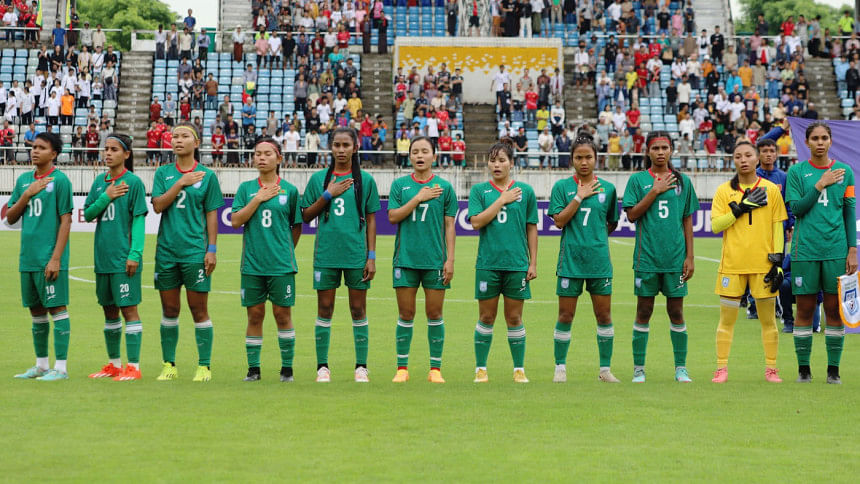
If winning the SAFF Championship in 2022 and 2024 warranted the Bangladesh women's team an open-top bus parade, what would be a proportionally appropriate celebration for the miracle they have just pulled off in Myanmar?
The word miracle is often thrown around casually in sports writing, but the achievement of the Bangladesh team -- qualifying for the AFC Women's Asian Cup 2026 -- really warrants this distinction.
Still, for the unconvinced, here is a stat: on Wednesday, Bangladesh became the lowest-ranked team in history to qualify for the Women's Asian Cup.
Bangladesh, ranked 128th, thrashed the 92nd-ranked Bahrain 7-0 and defeated the 55th-ranked hosts Myanmar 2-1, to secure top spot in Group C with a match in hand and earned their ticket for the mega event set to take place next year in Australia.
This record previously was held by Indonesia, who were ranked 96th when they qualified for the 2022 edition of the tournament.
Another way to understand the magnitude of what Ritu Porna Chakma and Co have pulled off is to take a look at the four teams that had qualified before Bangladesh -- Japan, Australia, China, and South Korea.
Japan, the highest ranked team in Asia at seventh, is a two-time Asian Cup winner and are also the only Asian side to win the FIFA Women's World Cup in 2011.
China, ranked 17th, are record nine-time winners and the defending champions in the Asian Cup, while Australia (15) have won the continental tournament once and South Korea (21) are still searching for their maiden title, having finished as runners-up in the last edition.
Come March next year, Bangladesh will be up against one, if not more, of these behemoths in the land down under, a battle they have earned the right to fight through their grit.
All four of these countries have a long history in women's football, having been active in the international scene since the 1990s, the decade when women's international football first started taking shape.
Meanwhile, Bangladesh's history in women's football officially began in 2010, when they took on Nepal in their very first international game in Dhaka, in the South Asian Games, a match they lost 1-0.
For years, Bangladesh's football revolved around wanting to win the SAFF Championship, a tournament that holds no real esteem in the global sense, and failing to achieve that.
The wonderous women's team have broken through this cycle of mediocrity with consecutive SAFF successes and the miraculous Asian Cup qualification.
For a country so deprived of sporting achievements, these girls have done more than enough to become the toast of the nation.
And while they have received the love and admiration of the people, exhibited through how thousands who flocked to their victory parades for SAFF triumphs, they have not received a proportionate monetary return nor the facilities high-achieving athletes like them deserve.
The women's team basically functions out of the Bangladesh Football Federation (BFF) dormitory, which was claimed to be "like a prison" by former women's team captain Dalia Akter last year.
Despite repeated successes, the women's team still don't have a dedicated training ground, let alone the bare minimum standard of training facilities. Questions have been raised over the diet prepared for them by the BFF and their overall sub-standard living condition during the tenure of the previous president, Kazi Salahuddin.
BFF has also failed to establish a proper domestic structure for the girls. The Women's Football League first began in 2011, ran for two seasons, then didn't happen for seven seasons straight before resuming in the 2019-20 season.
The top men's clubs have been reluctant to form teams in the women's league from the beginning, with none taking part in last year's edition.
Without the participation of top clubs, the league faces a lack of competition, with current champions Nasrin Sporting Club signing almost all of the national team stars.
The current women's team setup is reaping the rewards of the talents unearthed in school-level and age-level competition in the 2010s. But without a proper domestic system, the pipeline of players is at risk of drying up.
Considering how these girls have time and again exceeded expectations, despite the glaring limitations, an open-top bus parade to welcome Ritu and Co will only be reflective of how things are often operated in Bangladesh -- prioritising glitz over meaningful work.
Maybe this time, the country will see a different approach, one that ensures that this doesn't end as another flash in the pan and that Bangladesh continues climbing up the ranks in women's football.

 For all latest news, follow The Daily Star's Google News channel.
For all latest news, follow The Daily Star's Google News channel. 

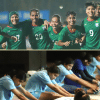

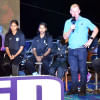
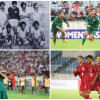

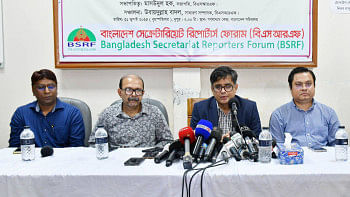
Comments